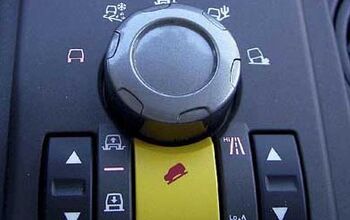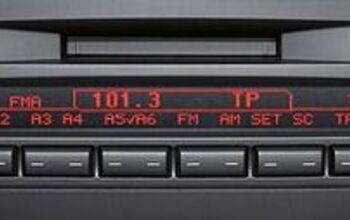The Truth About Automotive Electronics Pt 1: The Good
It’s doubtful that the AC-Delco engineers who devised the first electronic ignition system in 1961 envisioned the automotive revolution to follow. By then automobiles’ basic technological framework was well-established (piston engines, welded steel bodies, pneumatic tires, hydraulic brakes, etc.). Electronic ignition probably seemed like just another incremental improvement. Instead, electronics enabled quantum leaps in automotive performance, safety, comfort, efficiency and environmental impact. No other technology has been nearly so transformational.
Popular culture remembers the 1960s ‘horsepower war’ as the Golden Age of automotive performance. But twenty-first century cars with performance aspirations handily dust those Beatles-era relics. Compare the gas-guzzling smog-belching 1964 Pontiac GTO Tri-Power. We’re talking about a 280hp (SAE net) vehicle that does the quarter-mile in 14.8 seconds. Compare that to the 20+ mpg Ultra-Low Emission Vehicle (ULEV) Mazdaspeed3. The 263hp Japanese hot hatch will do the quarter in 14.2 seconds.
How about a 1965 L78-engine Chevrolet Corvette compared to a 2006 Corvette Z06. You’re looking at 340hp vs. 505 hp, 0-60 in 5.7 vs. 3.6 seconds. No contest. We live in a fabulous age of 200hp Honda Civics, 300hp 3-Series BMWs, 400hp luxury sedans and 1000hp Bugatti Veyrons.
Even better: aside from the dangers of a lost license, modern muscle is almost consequence-free. Today’s power comes with reasonable fuel efficiency, squeaky-clean exhaust emissions, minimal maintenance and “Sure Grandma, you can borrow my car” drivability. All made possible because carburetors, distributors and mechanical linkages have been replaced by the precision dance of electronic sensors, digital computers and pulse-width-modulated solenoids.
While electronics have made engines cleaner, more reliable and increasingly powerful, the automotive safety acronym zoo (ABS, DSC, EBD, SRS, ATTESA, PSM, etc.) owes its existence to electronics. Some modern safety systems (e.g. airbags and antilock brakes) do have mechanical ancestors, but those mechanical systems were expensive, slow-acting and dubiously reliable. Reliable low-cost electronics has made those systems nearly universal in modern cars. Even the TTAC Ten Worst winning Chevrolet Aveo is graced with standard front and side airbags and optional ABS.
Strange to say, the e-ubiquity has created problems for high-end automakers. When even bargain-basement cars have state-of-the-art electronics going for them, these upscale makers need new features to justify premiums prices. Once again, electronics comes to the rescue.
The trend at the leading edge of automotive electronics: cross-system communication and integration. BMW’s rain-sensing windshield wiper system tells the ABS computer when it’s raining. The ABS computer then subtly pulses the brakes to keep the brake rotors dry. Lexus uses its adaptive cruise control system to determine if a crash is imminent. If a crash is coming, the SRS computer tightens the seatbelts and decides which airbags to deploy.
Crash a Mercedes-Benz CLK and its electronic systems automatically stop the engine, unlock the doors, turn on the emergency flashers, and provide GPS coordinates to an emergency response service. This near instantaneous safety dance would be impossible without modern electronics. The range and scope of electronic wizardry is only limited by the talent and imagination of software coders.
This electronic creeping feature-ism has also transformed the comfort and convenience of driving (or being a passenger). A plethora of entertainment and information technologies– multi-channel audio systems, on-board DVD players, GPS navigation units, OnStar, etc.– have eliminated much of the drudgery.
Even the physical effort of operating a vehicle has been minimized by electronic servants. Manually unlocking doors, manually-adjusted seats, hand-crank windows, radio tuning knobs and the like are rapidly going the way of full-size spare tire.
Approach a modern BMW while pressing ‘Unlock’ on the key fob and this modern paradigm of electronic magic goes on display. Sure, the door unlocks, but that’s just the beginning. Windows roll down. The sunroof opens. The seats, mirrors and climate control system adjust to stored settings. No need to turn the ignition lock, just stick the key in the dash slot and press the “Start” button One-touch buttons and voice recognition eliminate even the effort of changing the radio station.
Of course, this technology is mostly found on high-end cars like BMWs. But history indicates it will quickly spread to less-expensive brands. Ford has already implemented Sync voice-recognition in mass market models and Nissan’s Intelligent Key system is available throughout its model line. Wait five minutes and your personal computer gets cheaper. Wait five years and Mercedes-Benz electronics show up in your Hyundai.
This electronic dominance of our cars shows no signs of abating. Whether it’s the Toyota Prius powertrain controls, the Volvo S80 lane-departure warning system or the Chrysler Sebring’s heated cupholders, automakers keep shoveling in the wires and the microchips. They are the major reason our modern cars are so wonderful. Though not as obvious as the benefits, this electronic sophistication has drawbacks. In our next installment, we’ll see how what the boffins giveth, they also taketh away.
More by Eric Stepans
Latest Car Reviews
Read moreLatest Product Reviews
Read moreRecent Comments
- Probert They already have hybrids, but these won't ever be them as they are built on the modular E-GMP skateboard.
- Justin You guys still looking for that sportbak? I just saw one on the Facebook marketplace in Arizona
- 28-Cars-Later I cannot remember what happens now, but there are whiteblocks in this period which develop a "tick" like sound which indicates they are toast (maybe head gasket?). Ten or so years ago I looked at an '03 or '04 S60 (I forget why) and I brought my Volvo indy along to tell me if it was worth my time - it ticked and that's when I learned this. This XC90 is probably worth about $300 as it sits, not kidding, and it will cost you conservatively $2500 for an engine swap (all the ones I see on car-part.com have north of 130K miles starting at $1,100 and that's not including freight to a shop, shop labor, other internals to do such as timing belt while engine out etc).
- 28-Cars-Later Ford reported it lost $132,000 for each of its 10,000 electric vehicles sold in the first quarter of 2024, according to CNN. The sales were down 20 percent from the first quarter of 2023 and would “drag down earnings for the company overall.”The losses include “hundreds of millions being spent on research and development of the next generation of EVs for Ford. Those investments are years away from paying off.” [if they ever are recouped] Ford is the only major carmaker breaking out EV numbers by themselves. But other marques likely suffer similar losses. https://www.zerohedge.com/political/fords-120000-loss-vehicle-shows-california-ev-goals-are-impossible Given these facts, how did Tesla ever produce anything in volume let alone profit?
- AZFelix Let's forego all of this dilly-dallying with autonomous cars and cut right to the chase and the only real solution.


































Comments
Join the conversation
Sure lots of plastic and garbage get dumped in China; but they also until only recently have been doing anything to regulate the pollution spewing from their factories. As far as greenhouse gasses, the US my be a big producer, but eveyone, US, EU, China and the rest of the industrialized contries contribute. Secondly, in alot of places now, you cant dispose of computers in regular garbage because of the circuit boards. Well what happens when your Idrive has to go to the recycler? Who knows. Lastly hybrids are NOT the answer. where are they going to dump all the battery "juices" once the batteries are spent? that icky stuff is not only difficlt to recycle but expensive as well...like PCB's were in the past and ended up being dumped in landfills by dishonest recyclers. I would rather drive a plain ULEV car that gets 34 miles to the gallon than a hybird which gets 40 with a superfund site in the back seat.